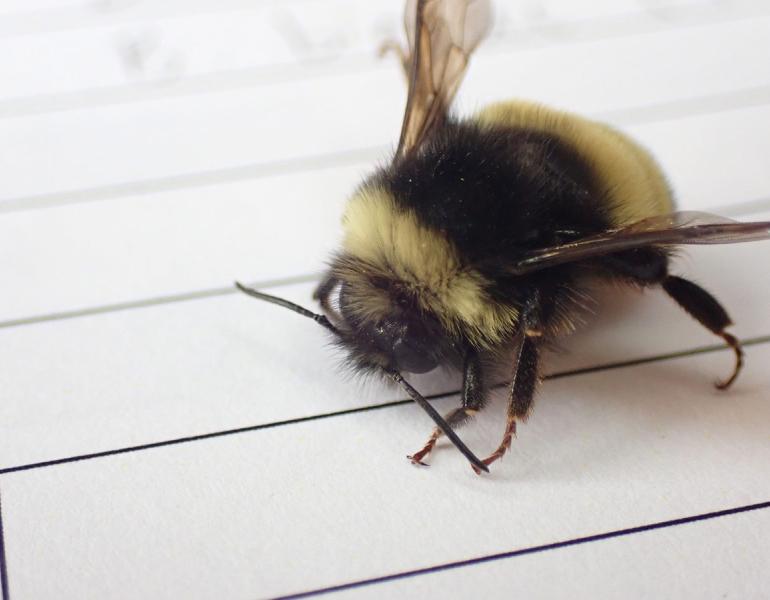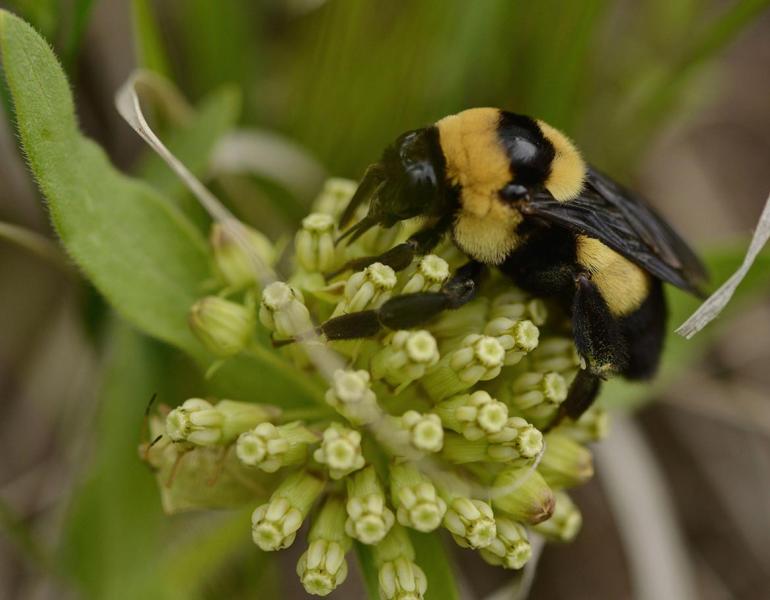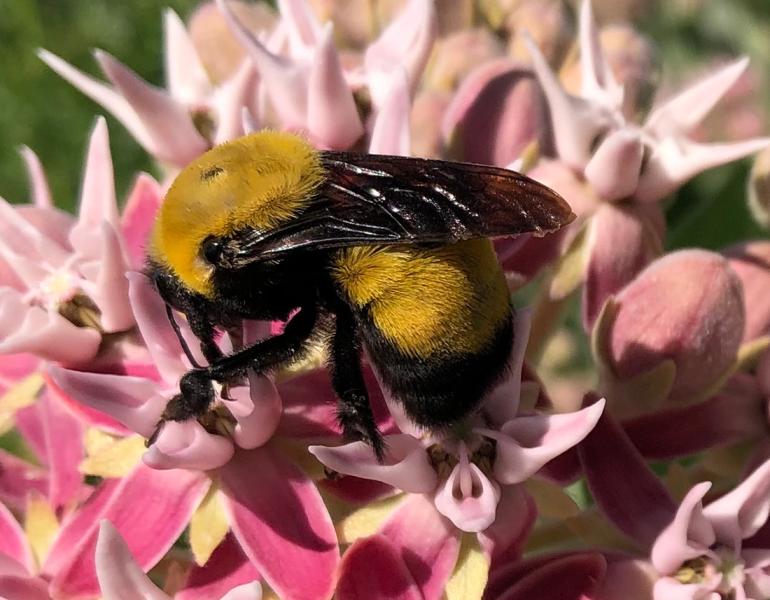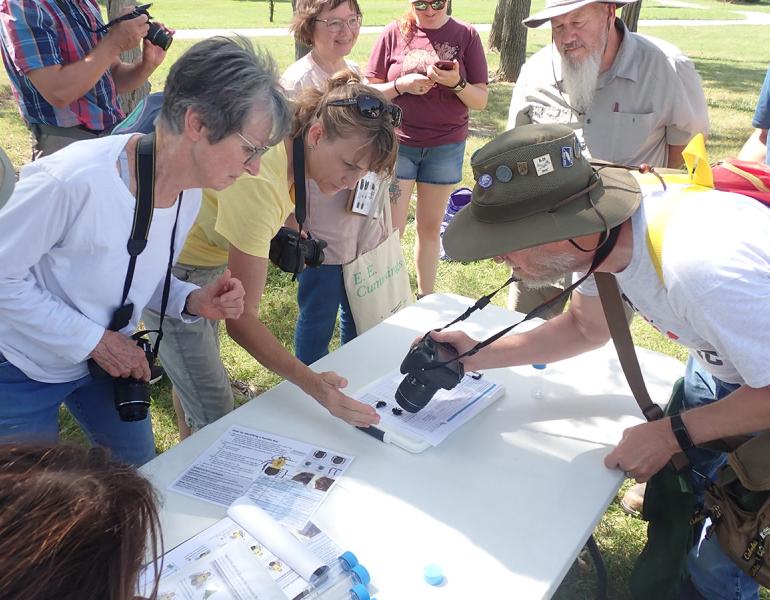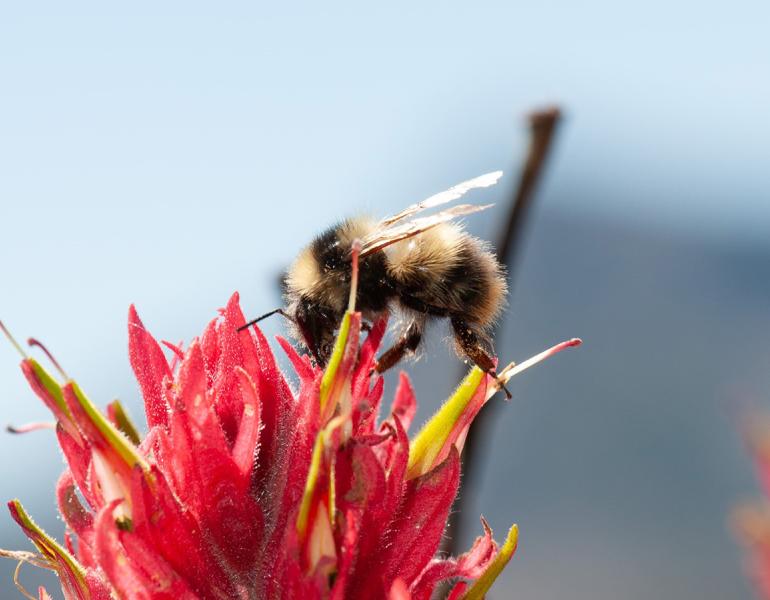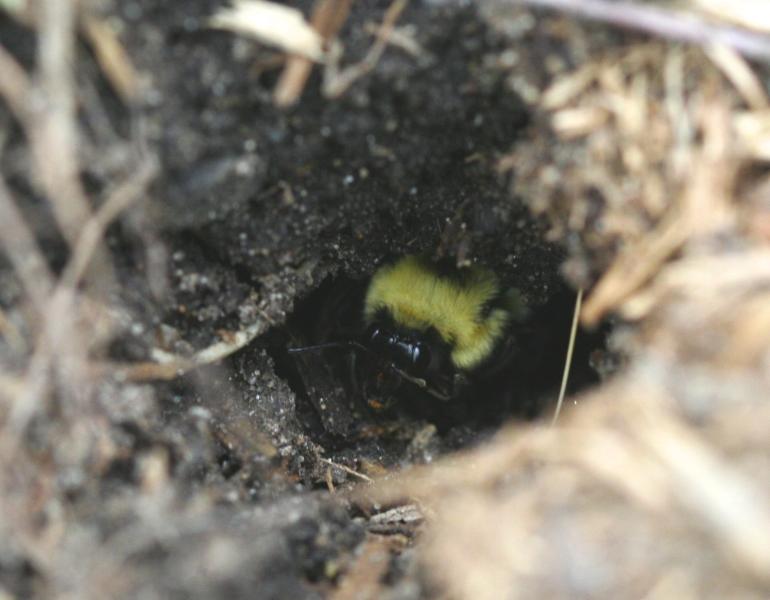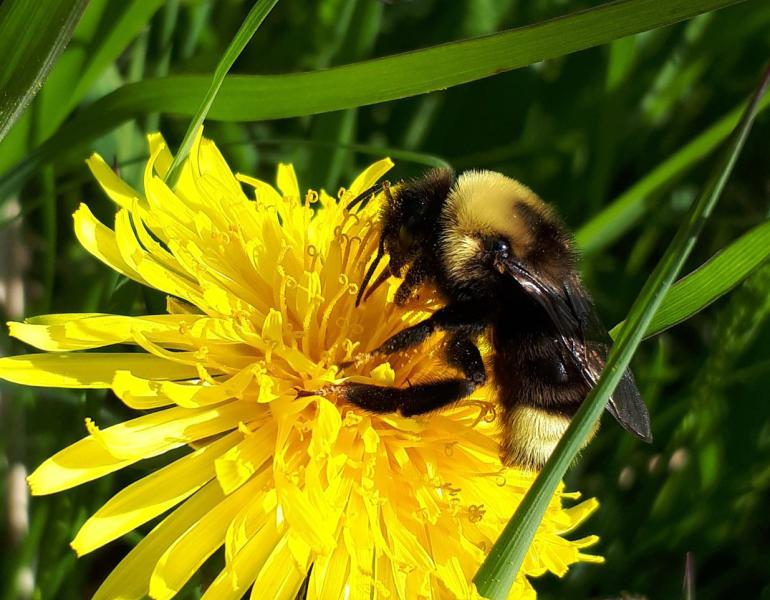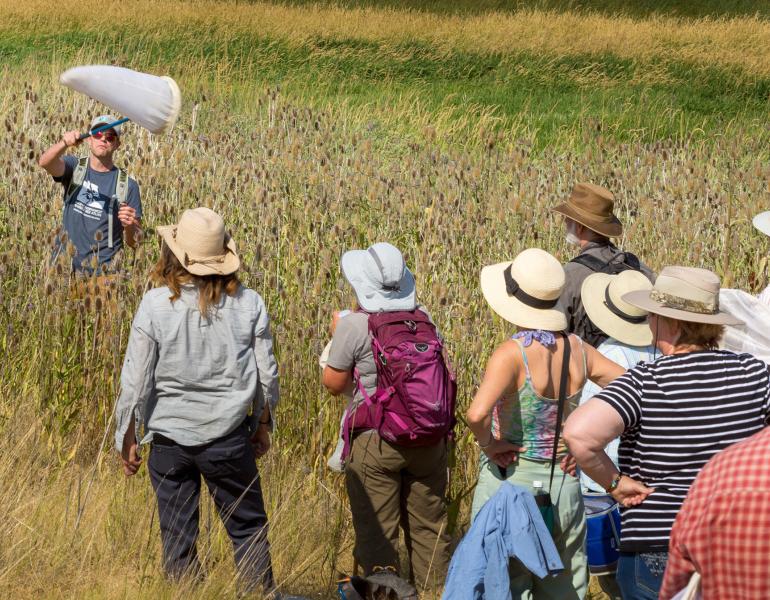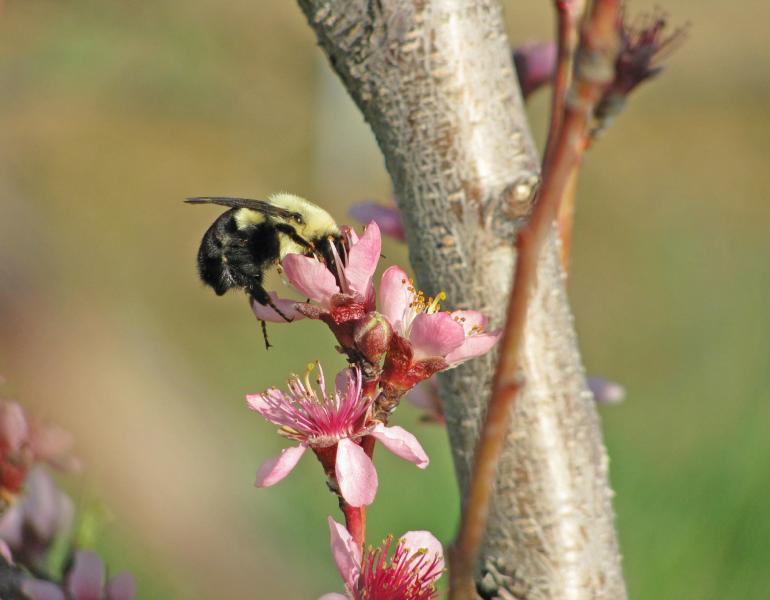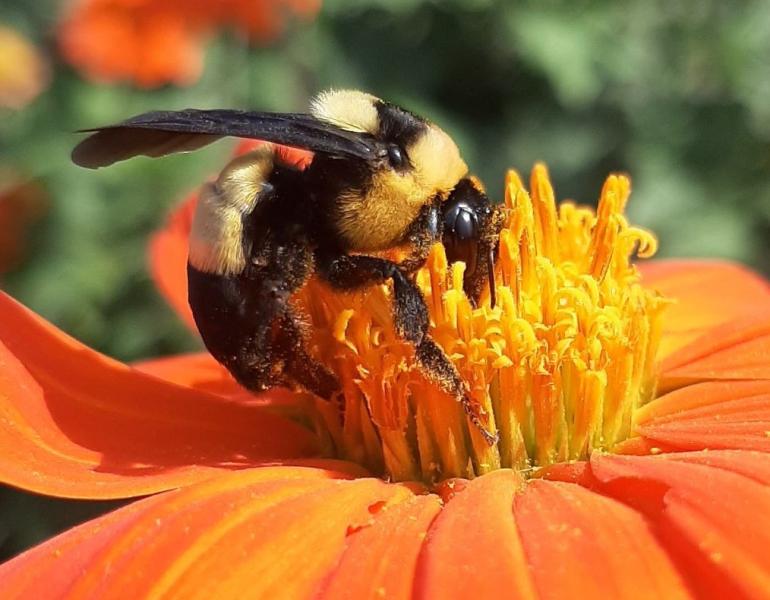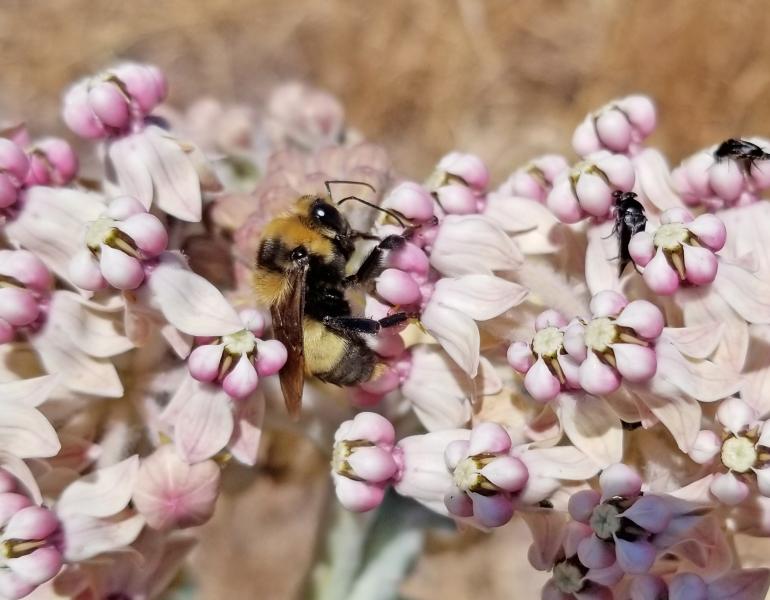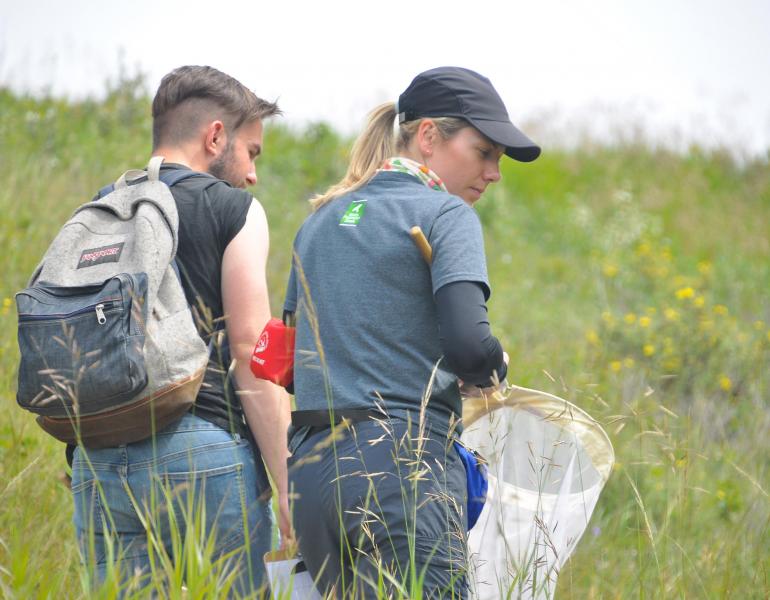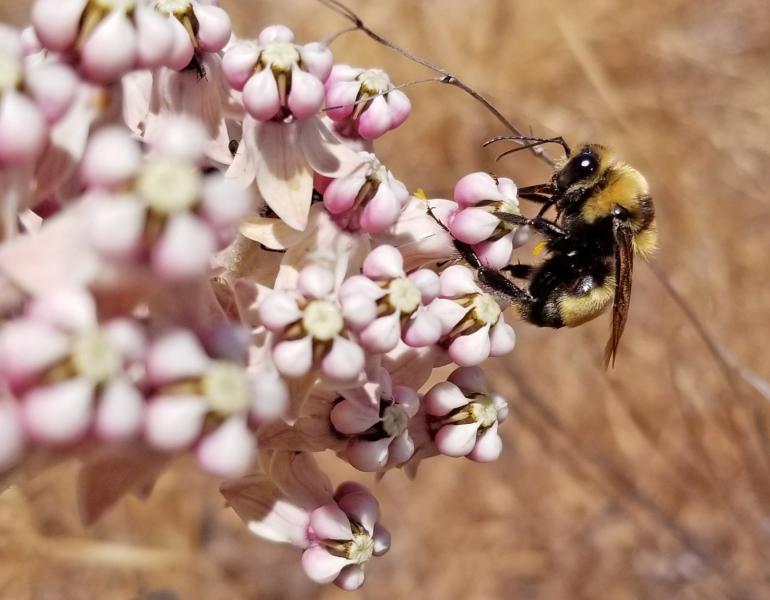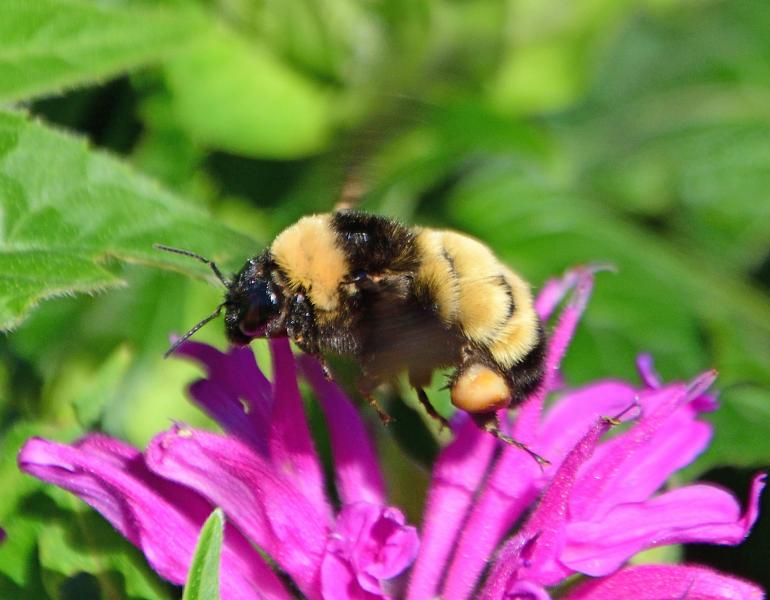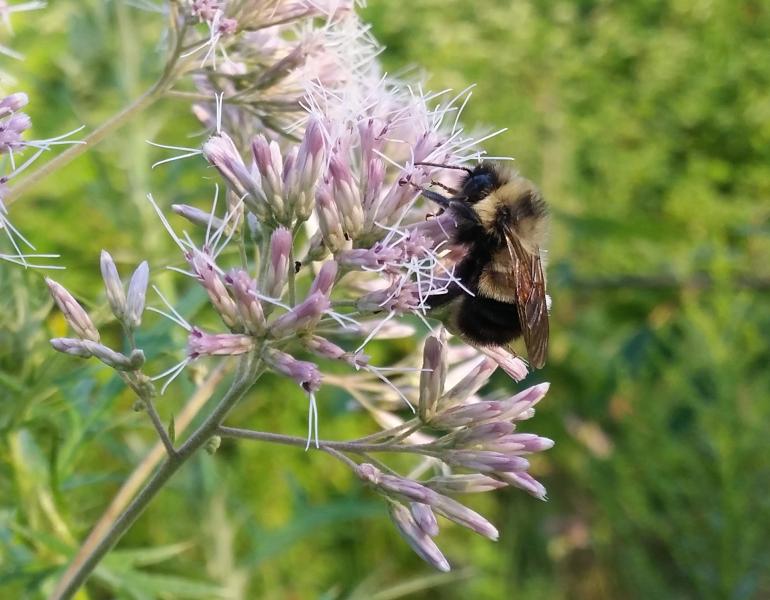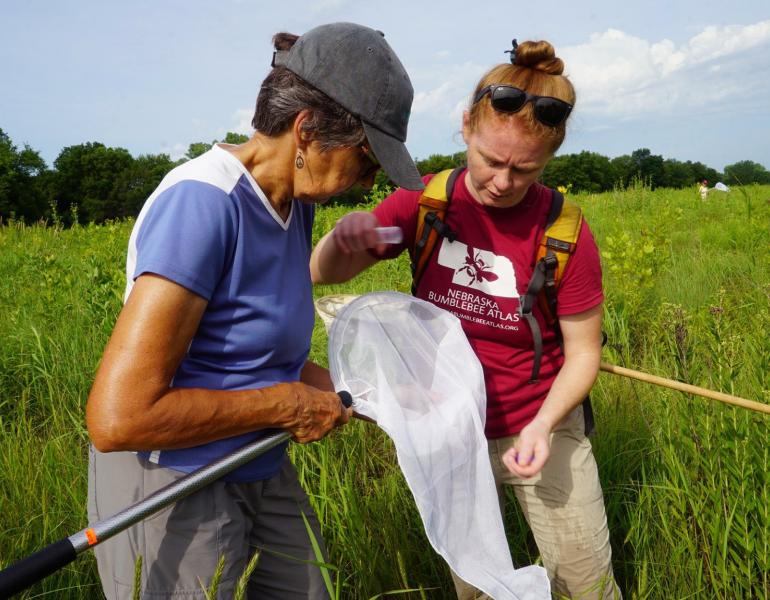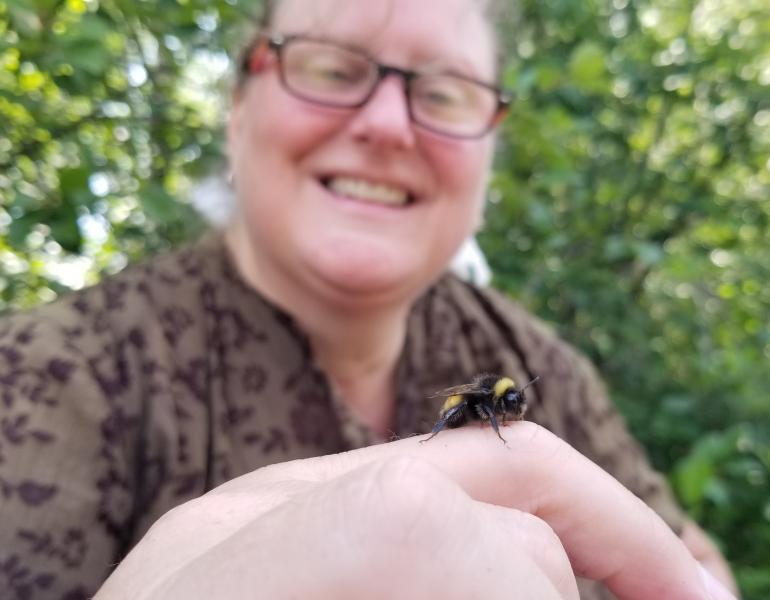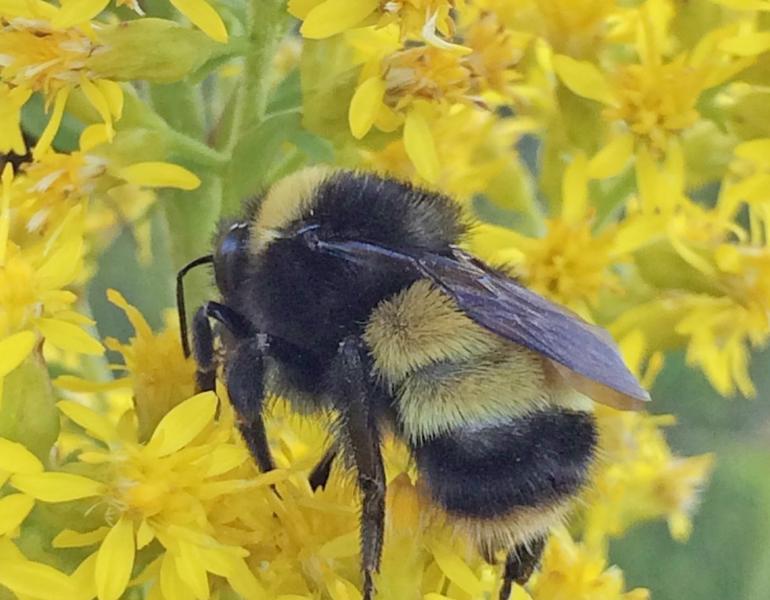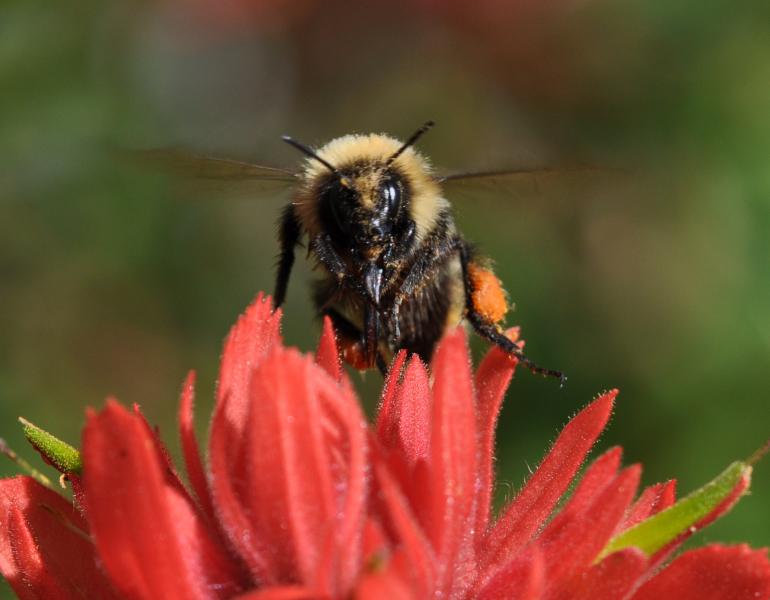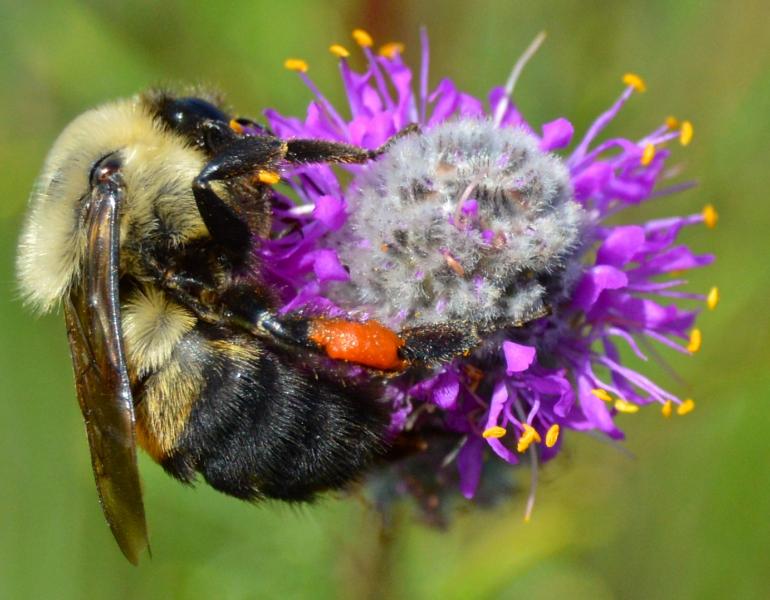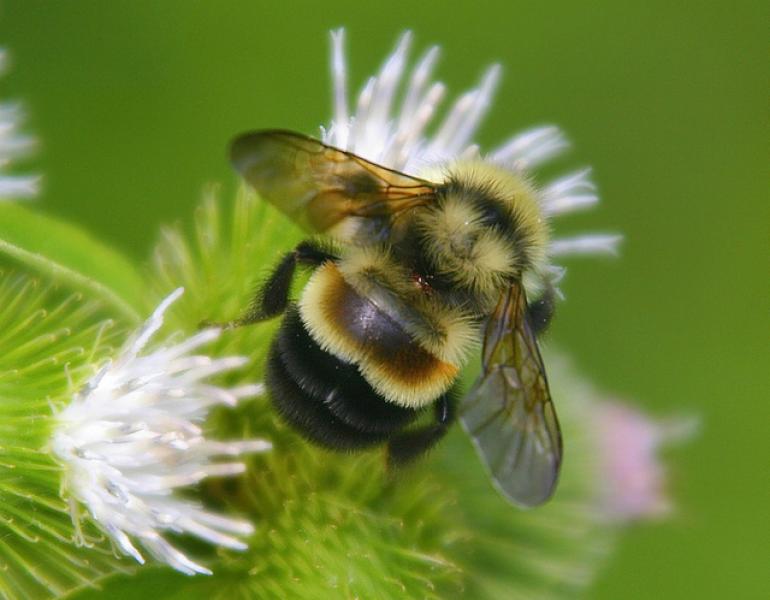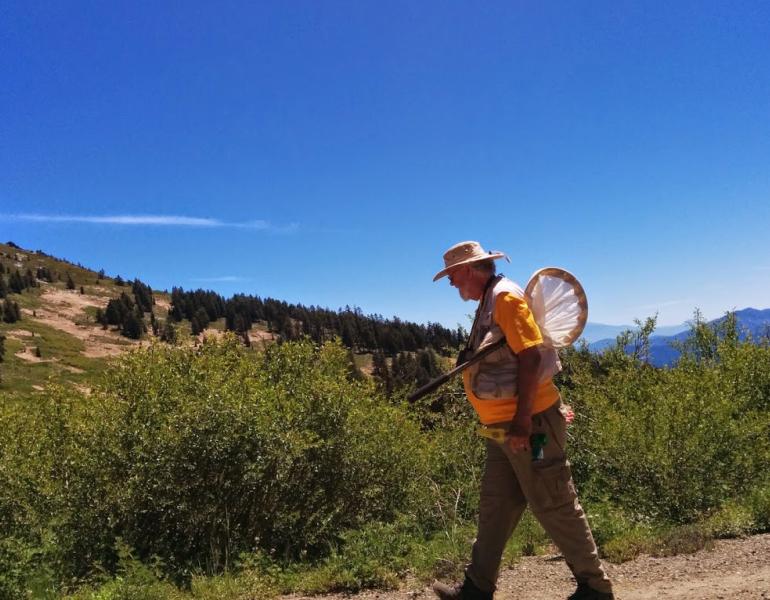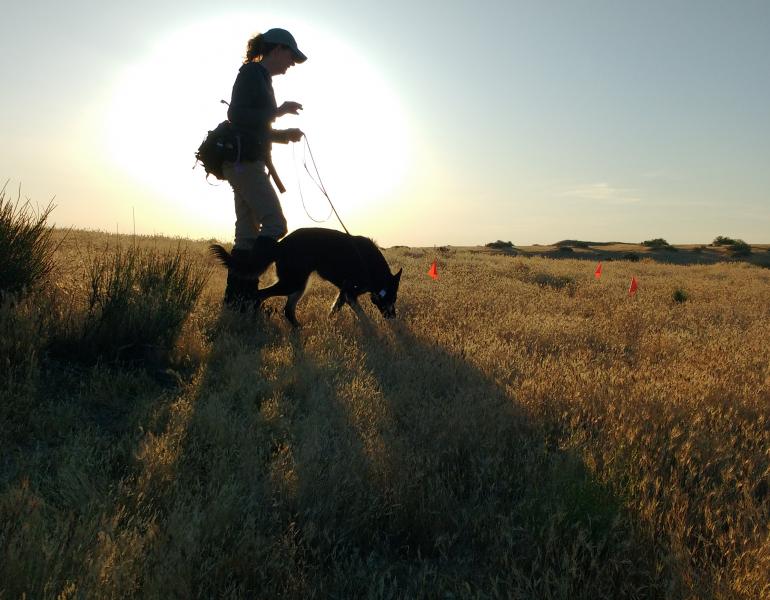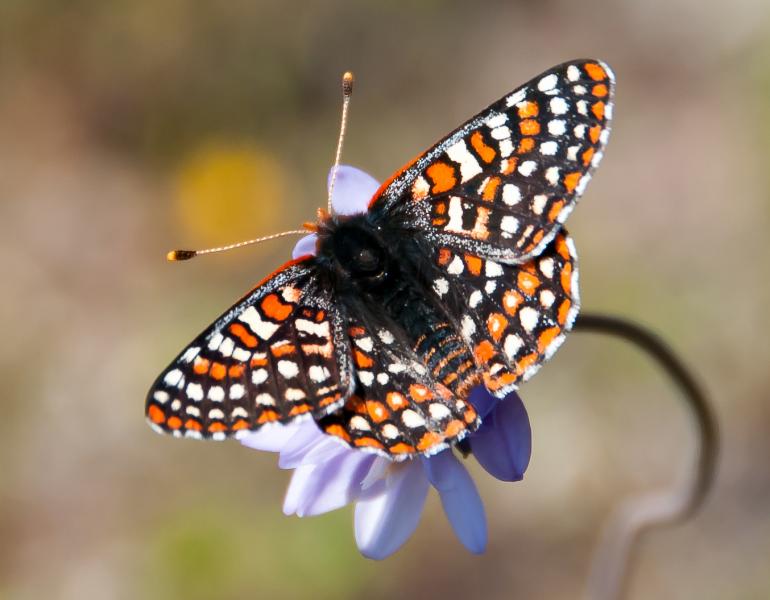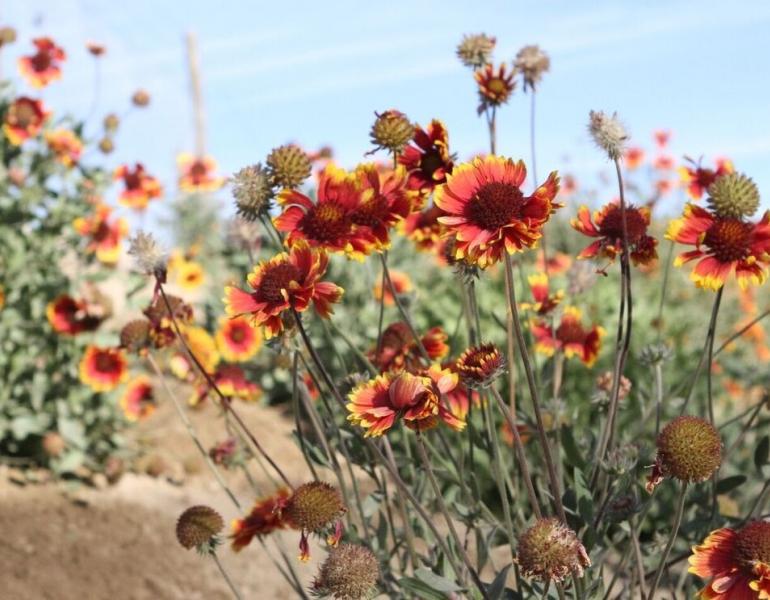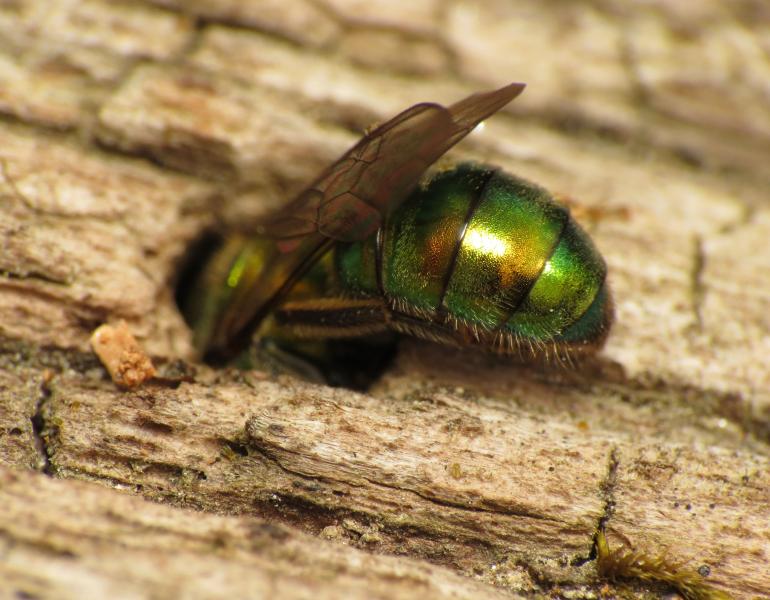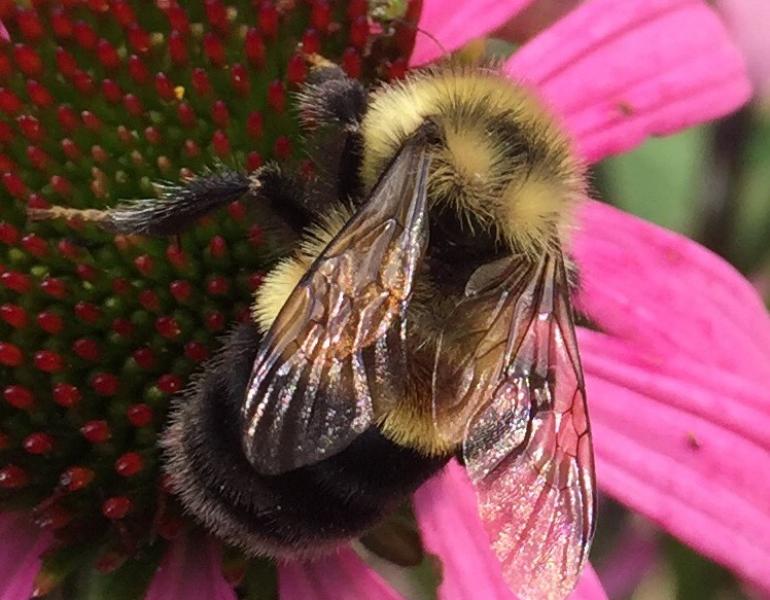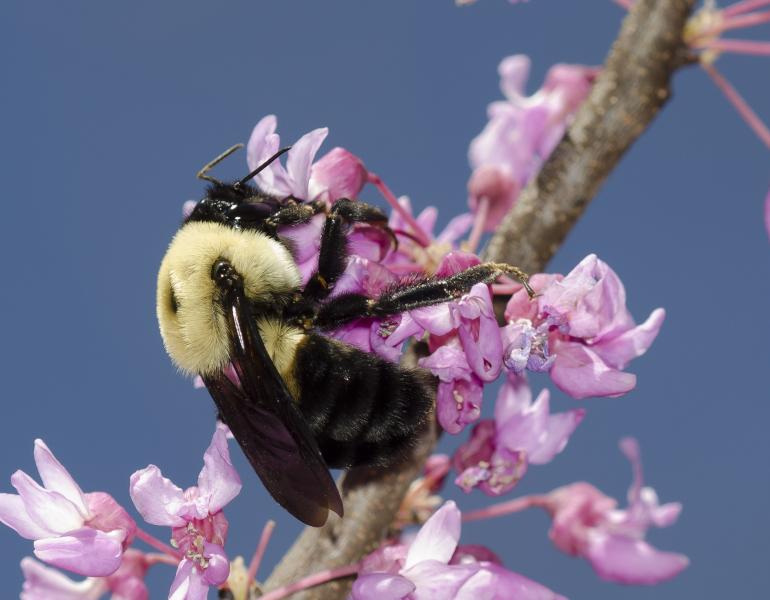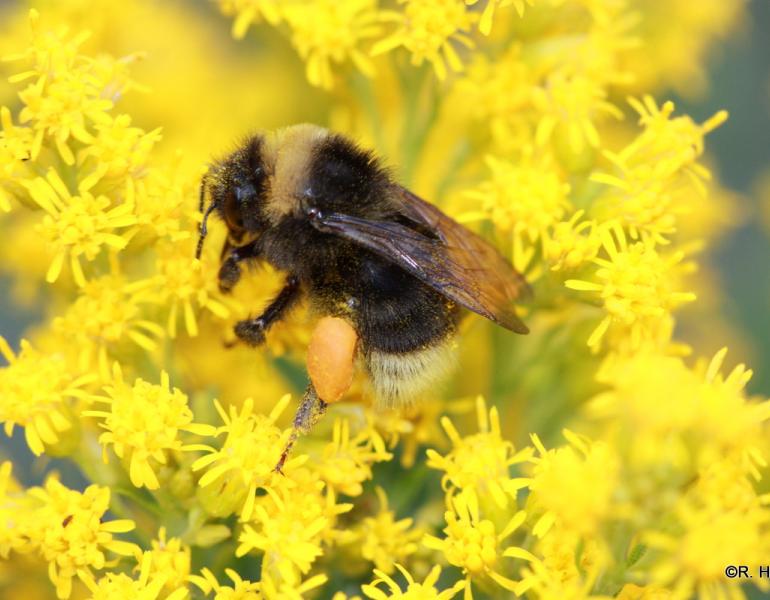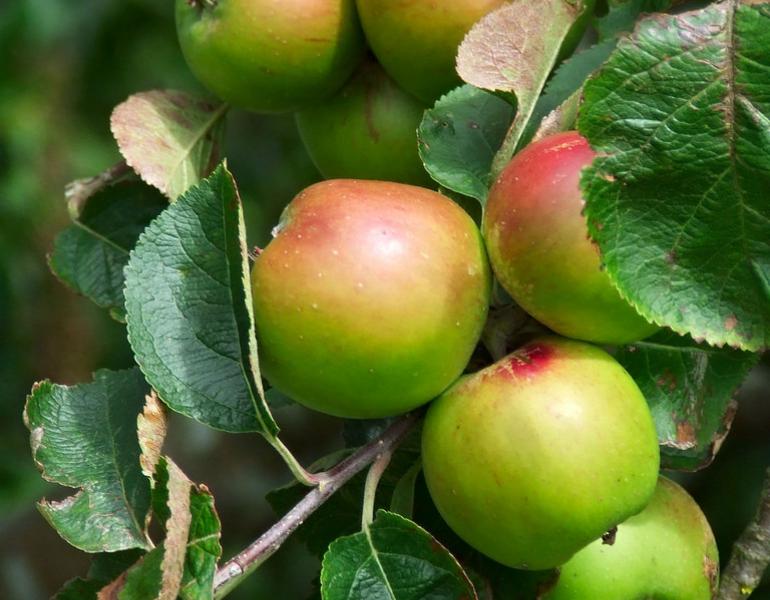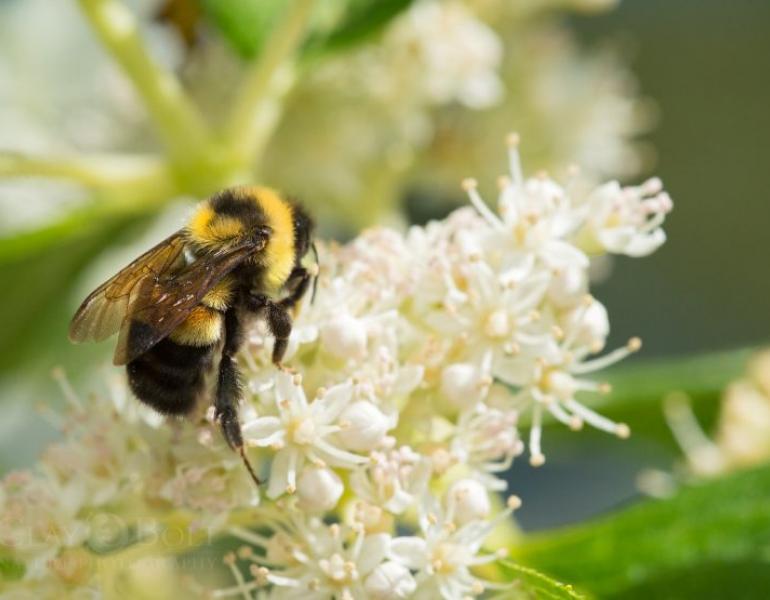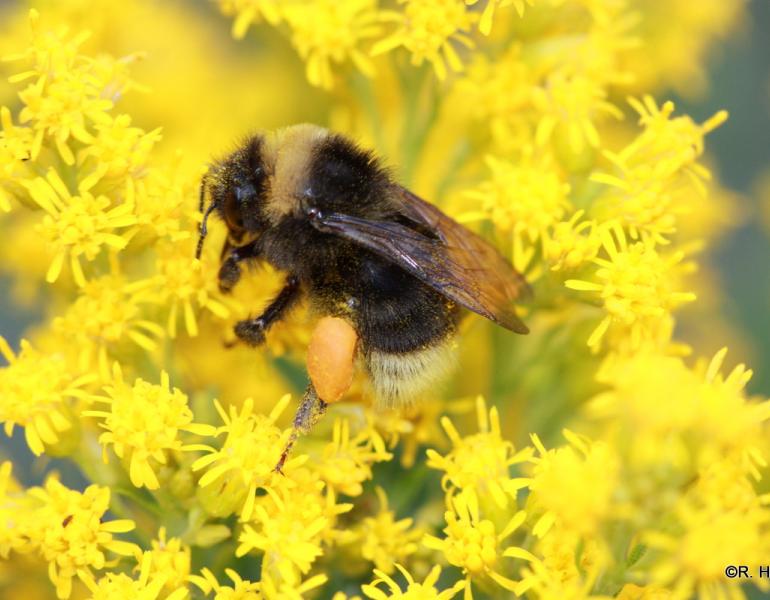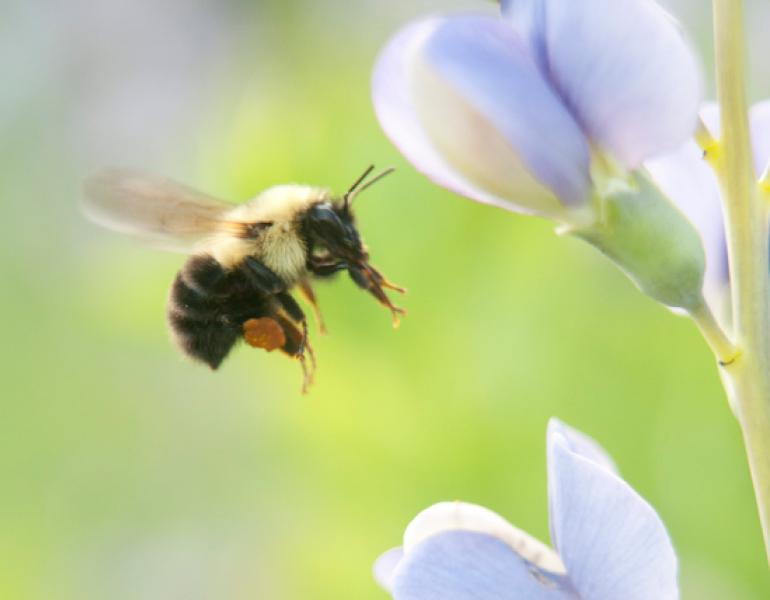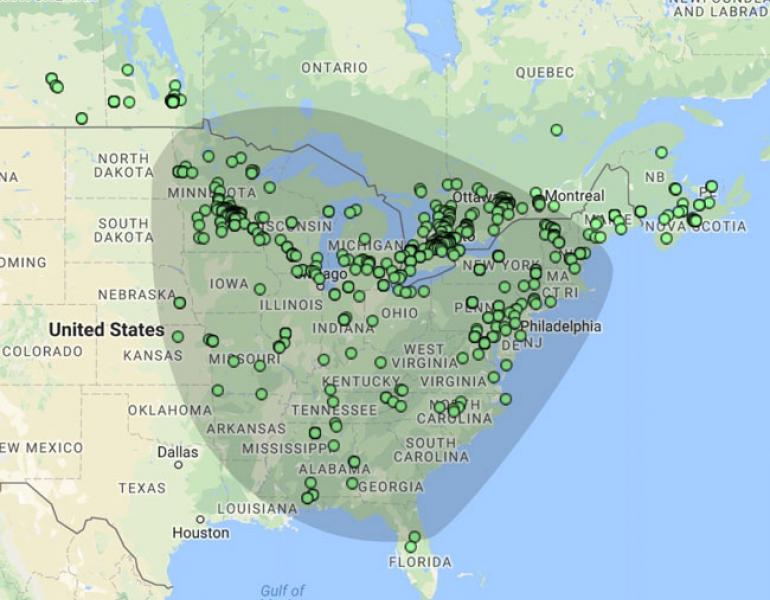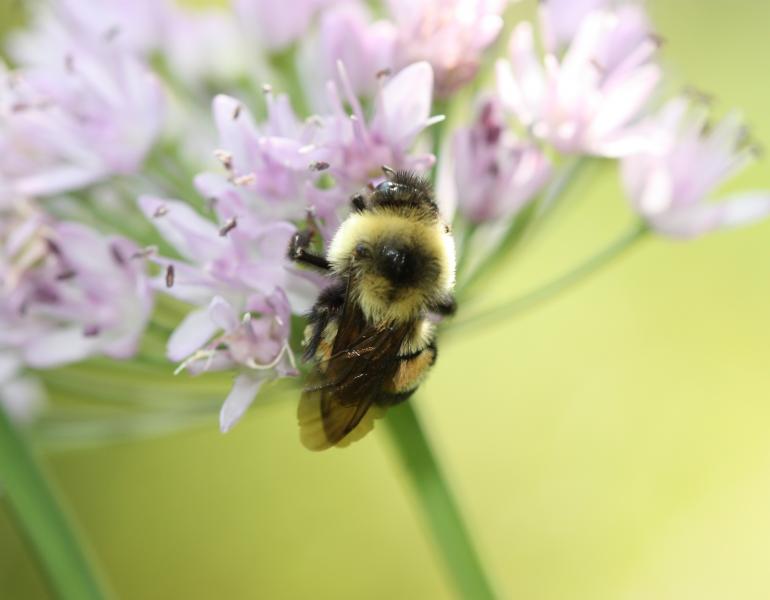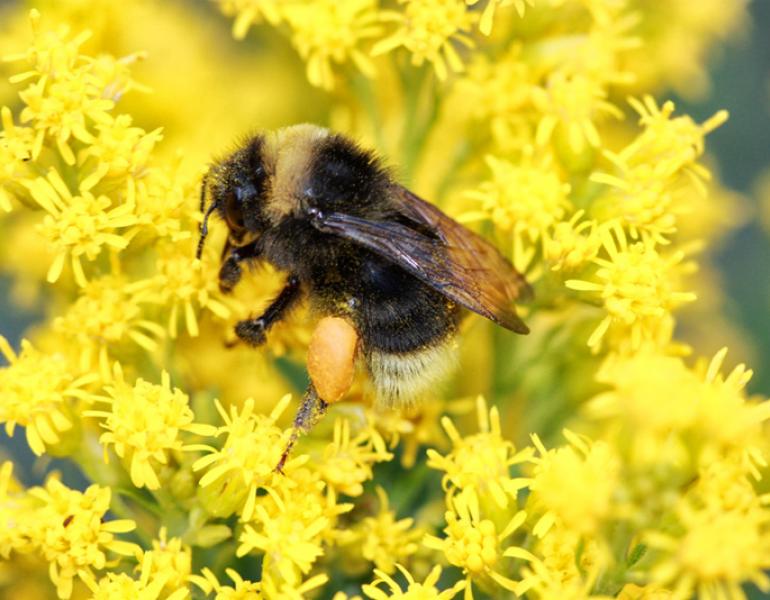Bumble Bee Atlas and Bumble Bee Watch are vital for filling data gaps and informing future conservation efforts. Today, we are highlighting some of the exciting finds of this summer’s collective efforts!
Bumble Bees
Celebrating Community Science as the Bumble Bee Atlas Expands to Five New States
With Montana, Colorado, Utah, Nevada, and Wyoming joining, the Bumble Bee Atlas is filling a key region gap that is home to many at-risk species!
Southern Plains Bumble Bee is One Step Closer to Federal Protection
The U.S. Fish and Wildlife Service has confirmed that the Southern Plains bumble bee is being considered for federal protection.
Xerces Society Files ESA Petition to Protect Morrison Bumble Bee
Xerces Society has submitted a petition to list Morrison bumble bee under the federal Endangered Species Act.
Midwest Volunteers Map 18,000 Bumble Bees
Traversing the vast grasslands from North Dakota to Kansas, through the glades of Missouri and wetlands of Minnesota, hundreds of community scientists roamed the Midwest last summer in search of bumble bees. And they found them!
Washington State Becomes First to Adopt a Statewide Strategy to Protect Bumble Bees
Washington has just become the first state in the United States to develop a statewide strategy to conserve bumble bees. The strategy, focusing on eight bumble bee species, was created with leadership from the Xerces Society and informed by data collected through the Pacific Northwest Bumble Bee Atlas, a Xerces community science program.
Where do Bumble Bee Queens Overwinter? Participate in Queen Quest This Fall to Help Us Find Out!
While we know a lot about what types of flowers bumble bees like, we know very little about where these new queens go to overwinter. Queen Quest returns this fall in an effort to gain information about where bumble bee queens overwinter. The official blitz date is Saturday, October 16, 2021, but you can search before or after this date.
A Q&A with Daniel Potvin-Leduc, a Bumble Bee Watch Star from Quebec
Victoria MacPhail of York University recently interviewed Daniel Potvin-Leduc, a Bumble Bee Watch star from Quebec, about his experience participating with Bumble Bee Watch.
Using Community Science to Conserve Bumble Bees: From Small Beginnings to a Continent-Wide Effort
As we mark Xerces' 50th year, we look at the ongoing effort to protect bumble bees. Xerces has adopted a multi-pronged approach: outreach and education to raise awareness, technical assistance with habitat restoration, advocacy to gain legal protection, and, the focus of this article, community science to gather data that informs our work.
What Should You Do for Pollinator Week? Go Bumble Bee Watching!
Going bumble bee watching is not only fun, but also a great way to contribute to real conservation science. Why not try it this summer?
Turning Appreciation into Action Through Community Science
During the month of April, there is a focus on community science projects that can be done right from home. So, the next time you find yourself in an impromptu photoshoot appreciating that magnificent monarch, fuzzy bumble bee, or fabulous milkweed, consider taking it a step further by adding your find to a community science project.
California Court Case: Protection of Insects under the California Endangered Species Act
The Xerces Society and our conservation partners at Defenders of Wildlife and Center for Food Safety, represented by the Stanford Environmental Law Clinic, appealed a recent court decision that determined that the California Fish and Game Commission lacks authority to list four bumble bee species under the California Endangered Species Act.
The Power of The Pinery: Six Years of Bumble Bee Community Science at Ontario’s Pinery Provincial Park
Pinery Provincial Park, near the southern tip of Lake Huron in Ontario, has been the site of Wildlife Preservation Canada’s Native Pollinator Initiative since 2015. Volunteers participating in this community science survey program have created a robust long-term dataset by contributing nearly two thousand species-specific bumble bee observations to Bumble Bee Watch.
Court Decision Undermines the State of California’s Ability to Protect Insects Under its Endangered Species Act
The Superior Court of Sacramento County recently sided with agricultural groups and determined that the State of California does not have the legal authority to protect insects under the California Endangered Species Act, effectively excluding a huge proportion of animal diversity from a law that was enacted to broadly protect the state’s wildlife.
It Takes (More Than) a Village
Xerces Society work to involve community scientists in tracking bumble bees have resulted in many thousands of people submitting nearly 75,000 observations. Together, this sheds light on bumble bee populations, where they are thriving, and on which plants they are foraging -- and informs conservation and protection efforts.
U.S. Fish & Wildlife Service Fails to Designate Critical Habitat for the Rusty Patched Bumble Bee
The U.S. Fish & Wildlife Service decided to not designate critical habitat for the rusty patched bumble bee, despite its previous finding that habitat loss threatens the bee. Failing to designate critical habitat may hinder recovery of the rusty patched bumble bee, which has already been lost from more than three quarters of its historic range.
Nebraska Bumble Bee Atlas: Doing a Little to Impact the Whole
The 2020 survey season begins this June. We hope you’ll join us in our quest to learn more about bumble bees and restore Nebraska’s natural habitats.
Five Ways to Support Queen Bumble Bees this Spring
This is a critical time of year because the queen needs sufficient food herself, as well as enough to nourish her first batch of developing offspring. Adding early blooming shrubs and trees to your yard or garden can provide essential resources that will help springboard the colony to health.
Ann Puddicombe, a Bumble Bee Watch Star
Ann is among the top ten Bumble Bee Watch submitters in North America. She has also given presentations on bumble bees to community groups, conducted her own independent bumble bee surveys, and advised local groups in creating pollinator habitat.
Still Questing for Bee Nests
Did you beat the odds this year and spot a bumble bee nest? If so, we really want to hear from you for York University’s #Quest4BeeNests research project!
The Source of Hope and Wonder Comes in Small Packages
Rich Hatfield, senior endangered species conservation biologist and bumble bee lead for the Xerces Society, trekked into Washington state’s Pasayten Wilderness to find the elusive high country bumble bee (Bombus kirbiellus).
Working Together in Iowa to Find the Rusty Patched Bumble Bee
Sarah Nizzi, Farm Bill Pollinator Conservation Planner and NRCS Partner Biologist, writes about a recent workshop in Iowa and a sighting of the endangered rusty patched bumble bee.
Insects Lose as Trump Administration Weakens the Endangered Species Act
These new regulations will make it much harder to protect and recover the animals that are struggling to survive and need our help the most.
Introducing Xerces’ Newest Community Science Project: Nebraska Bumble Bee Atlas
Work alongside researchers to collect data and support bumble bee conservation.
5 Ways Wildlife Preservation Canada’s Bumble Bee Recovery & Conservation Initiatives Benefit from Bumble Bee Watch
Wildlife Preservation Canada’s efforts to conserve native bumble bees would be nothing without help from our volunteer community scientists across the country, and without Bumble Bee Watch.
Honoring Robbin Thorp, a Legendary Figure in North American Bee Conservation
Robbin Thorp, Professor Emeritus at University of California–Davis, has made lasting contributions to the bee conservation community in ways that might never be measured, but will certainly be felt.
A Quest for Bumble Bee Nests: The Missing Link
Researchers at York University are recruiting members from across North America for a very important mission. Your assignment, should you choose to accept it: find and submit sightings of bumble bee nests.
National Butterfly Center Gets Reprieve—But Border Wall Will Impact Much More
There are many reasons to oppose the wall along the southern border—including the loss of habitat for some of our smallest and most important animals.
Businesses Aligning with the Life that Sustains Us
The trend of business owners aligning with social and environmental causes is on the rise. Here at the Xerces Society, we are feeling these benefits—and are very thankful for the support.
Where Do Pollinators Go in the Winter?
Most native bee species will spend the winter in the nests that their mothers provisioned. In fact, just like bears, many pollinators hibernate through the winter—and they may need a little help to survive until spring.
Pollinator Conservation Program Digest – November 2018
November’s featured staff hail from Minnesota, Indiana, and California, and have been conducting training and outreach events, helping General Mills to implement their plan to plant 3,300 acres of pollinator habitat, and monitoring farm habitat plantings in the San Joaquin Valley.
A Shifting Climate Creates Winners and Losers
We are already observing impacts on some species that are emerging earlier or whose distributions are changing, but it is difficult to characterize how insects as a whole will be impacted: some species will benefit while most will lose out.
Fall Garden Tips to Benefit Bumble Bees All Year
The growing season may be winding down, but fall is an important time to create habitat. The work you do now will help support overwintering pollinators and the next generation of bumble bees.
The Xerces Society Seeks Endangered Species Protections for California Bumble Bees
Protecting these species is not only the right thing to do; it will also help to maintain the healthy ecosystems that make California such a remarkable and productive state.
Celebrate Invertebrates During National Apple Month
No matter how you obtain your apples—whether you pick them yourself, grab them at the grocery store, or go bobbing for them—it is important to take a moment to remember the pollinators and beneficial insects that make this delicious harvest possible.
The Endangered Species Act Needs Your Help!
The Endangered Species Act is our nation’s most effective law for protecting animals and plants in danger of extinction, and it has prevented 99% of listed species from going extinct. We need your voice to help defend this crucial law.
Kicking Off Canadian Bumble Bee Watch Training Events!
During this year's Pollinator Week (June 18 to 24) multiple locations in Ontario and Alberta were buzzing with activity, including an assortment of Bumble Bee Watch community-science training events led by Wildlife Preservation Canada.
Bumble Bee Die-Off Under Investigation in Virginia
Bee kill incidents have marred Pollinator Week—which should be a week of celebration. Will other states learn from Oregon to prevent future incidents and protect pollinators?
Surprising Results from a Survey of Bumble Bee Watch Users
This past February, Bumble Bee Watch users were invited to take a survey run by York University researchers to learn more about participant demographics, motives, and confidence with bumble bee identification.
Unblinded by Science
As the anniversary of the March for Science approaches, we reflect on ways science has informed our conservation efforts over the past year.
Wildlife Preservation Canada Continues Training “Bumble Bee Watchers”
Begun in 2015 at one location in Ontario, Wildlife Preservation Canada has expanded Bumble Bee Watch citizen science training programs to multiple locations across Canada. The programs are held in areas with historical observations of at-risk species.
Community Science Data Aids in Expert Testimony on Regulation of Commercially Bred Bumble Bees
Observations from Bumble Bee Watch show the common eastern bumble bee (Bombus impatiens) far outside of its native range.
Observations by Community Scientists Expand Known Range of the Two-Spotted Bumble Bee
Contributions to the community science program Bumble Bee Watch are expanding our understanding of where species have been - and potentially where they are going.
Rusty Patched Bumble Bee Deserves Protection, Not Delay
On February 10, 2017, the rusty patched bumble bee was slated to receive the federal protection it so clearly deserves. Unfortunately, the Executive Order signed by the president on Inauguration Day freezing all new regulations while the new administration reviews “questions of fact, law, and policy” has unnecessarily delayed the implementation of this rule.
Rusty Patched Bumble Bee: The First Bee in the Continental U.S. to be Protected Under the Endangered Species Act
This news comes after more than a decade of work by the Xerces Society and our partners: Scientists, farmers and land managers, filmmakers, advocates, and community members who all care about native bees and their plight.
New Report: How Neonicotinoids Can Kill Bees
To bring clarity to the debate and to inform discussion, the Xerces Society has published How Neonicotinoids Can Kill Bees. Summarizing hundreds of studies, the new report provides an in-depth look at the science behind the role these insecticides play in harming bees.
Climate Change Driving, Not the Only Passenger; Bumble Bee Conservation in Context
Interpreting recent research about the impacts of climate change on bumble bees, providing context for the results, and examining how they may affect conservation efforts.


